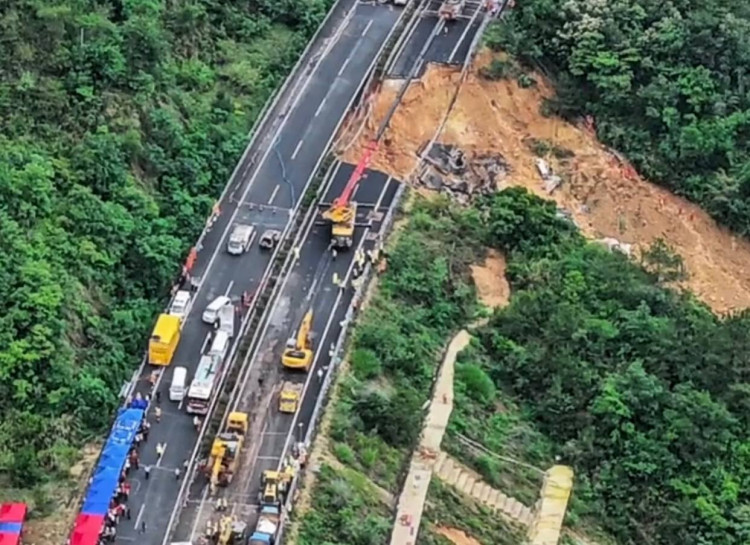A section of a highway in Meizhou city, Guangdong province, southern China, tragically collapsed, causing vehicles to plunge and resulting in at least 24 deaths. This catastrophic incident underscores ongoing concerns about infrastructure safety in regions prone to extreme weather conditions.
The collapse occurred around 2 a.m. local time when an approximately 59-foot-long section of the roadway gave way. This disastrous event led to 18 vehicles falling down a slope, creating a nightmarish scene of destruction and chaos. By Wednesday afternoon, the official death toll had risen to 24, as reported by China's state-run Xinhua News Agency.
Authorities and rescue workers were quick to respond, with state broadcaster CCTV reporting that 30 individuals were taken to local hospitals for treatment. The rescue efforts were complicated by the difficult terrain and the scale of the emergency response required.
Eyewitness accounts provided to local media described hearing a loud noise and witnessing a large hole forming just behind them on the highway moments before the section collapsed. These accounts were accompanied by dramatic visuals in the media, showing smoke and flames rising from the wreckage, with highway rails visibly slanting into the inferno and a pile of blackened vehicles lying on the collapsed slope.
Recent weather reports from the region have noted record rainfall and flooding over the past two weeks, accompanied by hailstorms. Some villages in Meizhou experienced flooding in early April, and heavy rains continued in the days leading up to the highway collapse. The saturated ground and extreme weather conditions likely contributed to the instability of the roadway structure.
The highway's foundation appeared significantly compromised, with visible caving along the section that broke off. This incident raises significant questions about the resilience of infrastructure in areas frequently hit by severe weather, and whether enough is being done to maintain and inspect aging transport routes.






